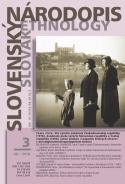„Die Lubinaken kommen!“ Odhaľovanie Hurbanovho pomníka v Novom Meste nad Váhom v kontexte osláv 10. výročia vzniku Československej republiky
“Die Lubinaken kommen!” Unveiling Hurban’s Memorial in Nové Mesto nad Váhom in the Context of Celebrating the 10th Anniversary of the Czechoslovak Republic
Author(s): Peter MachoSubject(s): History, Anthropology, Social Sciences, Customs / Folklore, Cultural Anthropology / Ethnology, Culture and social structure , Nationalism Studies, Pre-WW I & WW I (1900 -1919), Politics of History/Memory
Published by: Ústav etnológie a sociálnej antropológie Slovenskej akadémie vied
Keywords: Czechoslovak Republic; Czechoslovak legionnaires; Slovak nationalism; collective memory; Nové Mesto nad Váhom; Jozef Miloslav Hurban;
Summary/Abstract: The study describes the preparation, construction and official unveiling of Jozef Miloslav Hurban’s Memorial in Nové Mesto nad Váhom on the 10th anniversary of the birth of the Czechoslovak Republic in 1928. The construction of the memorial was initiated by the local organisation of Matica slovenská, with the involvement of Slovak and Czech intellectuals (Ľudmila Podjavorinská, Rudolf Markovič, Otokar Fleischer and others). The collective remembering of Hurban was marked by creating ideologically motivated links between the Hurban and legionary traditions. The legionary element was integrated in the rhetoric and ritual aspects of this festivity on purpose. Ján Drobný suggested using this memorial initiative to achieve definitive Slovakisation of the public life in the town, even by using violence. His proposal was targeted against the members of the so-called better society which arose mainly from the Jewish community and preferred Hungarian in public communication.The events related to Hurban’s Memorial revealed the frustration of some members of the Slovak intellectual élite. They had the feeling that the upheaval and the birth of the republic in 1918/19 did not culminate with absolute victory of the Slovak national idea. The purpose-built and positively “modelled” picture of the “Hurbanist”past was one of the factors that worked in the contemporary discourse as purported guarantee of the national reliability and loyalty of the citizens of the Nové Mesto region towards the Czechoslovak state.
Journal: Slovenský národopis
- Issue Year: 66/2018
- Issue No: 3
- Page Range: 287-302
- Page Count: 16
- Language: Slovak

